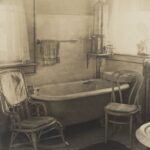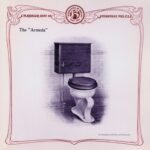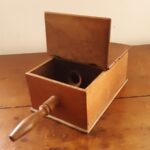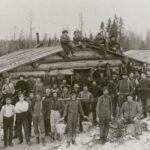As was so often the case with major American businesses in the 1800s, the Kohler Company grew from modest roots. The company’s founder, John Michael Kohler, began his working life first as a delivery truck driver and then a salesman. Born in 1844 in Schnepfau, in the western part of Austria, Kohler emigrated to the United States with his father and stepmother in 1854. The family settled first in Galena, Illinois, but then moved to St. Paul, Minnesota, to join relatives. Apparently unable to stand living with his violent-tempered father, John Michael left home at an early age, and eventually landed in Chicago. He stayed there for nine years, working most of that time as a salesman.
John Michael’s sales calls took him to Sheboygan, among other places, where he met and then married schoolteacher Lillie Vollrath in 1871. Lillie was the daughter of Jacob J. Vollrath, who himself had come to the United States from Germany. As was customary for that time, John Michael was taken into his father-in-law’s business, the Union Steel and Iron Foundry, which was located on the corner of Ninth St. and St. Clair Ave in Sheboygan. Two years later, Jacob sold — or gave, the surviving records are not clear — the business to John Michael and a partner.
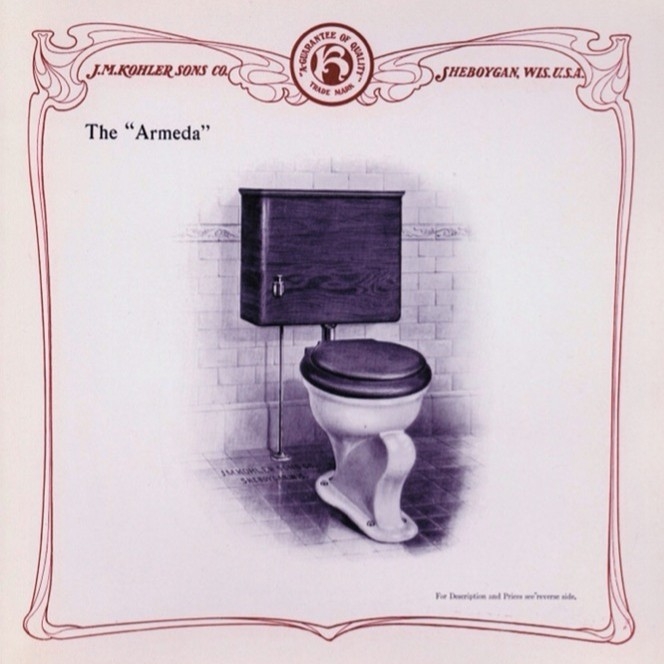

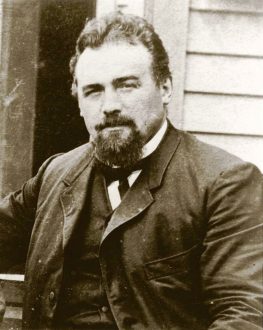
After the sale of the foundry, Jacob began a new business that hoped to specialize in the production of enamelware, such as tea kettles and cooking pots, for use in kitchens. Enameling, a process for applying polished surfaces such as glass or porcelain to metals, has been known since antiquity. It requires great skill and experience to manage properly, and at first Jacob’s company was unable to produce high-quality enameled products for the consumer market. In search of better results, Jacob dispatched his son Andrew to Germany, to learn how to improve the process. Andrew’s trip was basically a form of industrial espionage, and it was made possible by his knowledge of foundry work and his fluency in German. Andrew spent the winter of 1873-1874 working in a foundry that used enameling. He returned to Sheboygan in 1874 with the essential techniques in hand. One more spying trip was needed to perfect the process, but finally Jacob’s new business, the Sheboygan Cast Steel Company, was ready to enter the kitchen appliance market.
Up until the time of its sale to John Michael Kohler, Union Steel and Iron had produced cast iron products such as plows and harrows, water troughs, and specialty equipment for railroads, and it continued to expand this business. Following a fire in 1880 that destroyed the original foundry, Kohler, Hayssen and Stehn, as the company was now called, built a new and larger facility that included an enameling shop, no doubt using techniques that John Michael’s brother-in-law, Andrew Vollrath, had brought back from Germany. One of their first enameled products was a bathtub made by applying a porcelain coating to a cast iron horse trough. With this product, Kohler entered the booming market in bathroom furnishings, a market stoked by the associated construction boom in new single-family houses in American cities and their emerging suburbs. Not all Kohler bathroom products would use enameling – toilets, for example, were made from molded pottery – but from its beginnings to the present day, foundry work and enameling have remained core parts of Kohler’s business.
Written by Thomas Broman, November 2020.
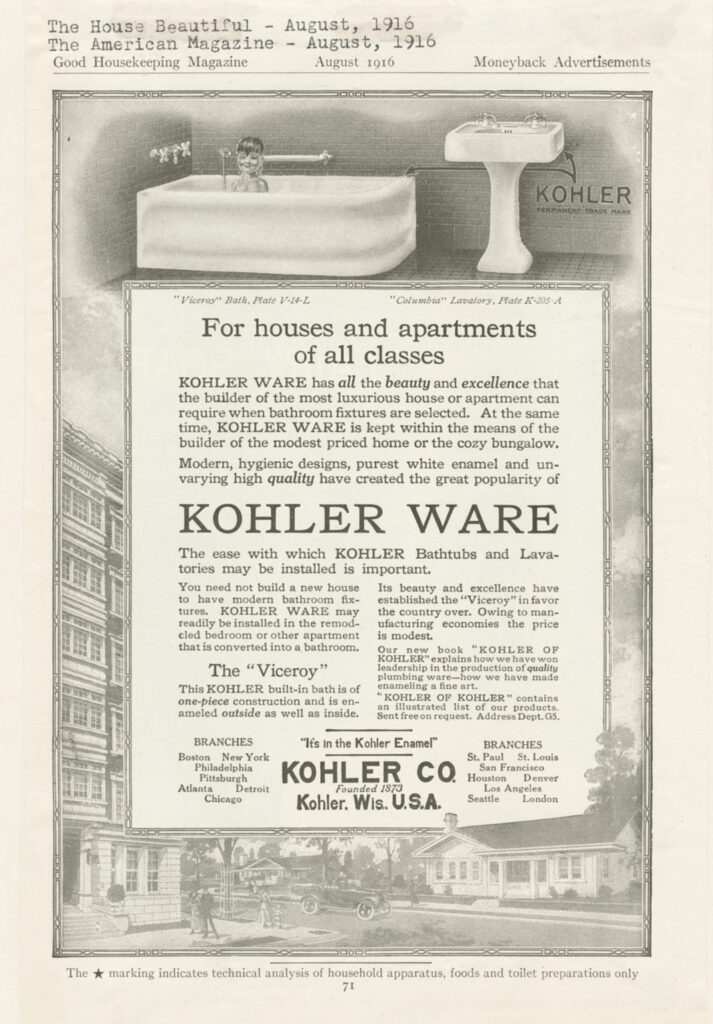
SOURCES
Thomas C. Reeves, Distinguished Service: The Life of Wisconsin Governor Walter J. Kohler, Jr. (2006)
Vollrath: ‘Das Alte Geschlecht’ (unpubl. manuscript in Sheboygan County Historical Society.) [The author thanks Robert E. Kohler Jr. for a copy of this source.]
